ChicGeek Comment - Consumerism Needs YOU! (Work-From-Homers)
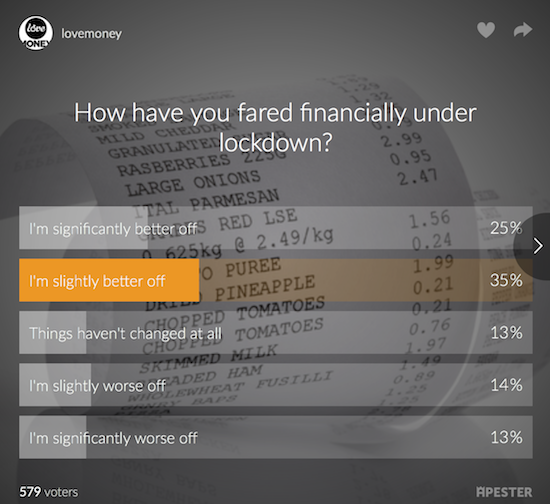 Money greases the wheels of our consumerist society. Without this continual flow of finance the economy contracts and many people lose their livelihoods, especially in retail.
Money greases the wheels of our consumerist society. Without this continual flow of finance the economy contracts and many people lose their livelihoods, especially in retail.
It is completely natural, and prudent, to want to save in periods of uncertainty. Talk of entering the worst recession for over 300 years would make even the most optimistic of people think twice about a big purchase or being frivolous with their cash.
COVID 19 has been a tale of two working economies; those, generally, white collar workers working from home, whose wages weren’t affected, saving money on travel and lunches, and those reliant on these workers being made redundant or having their hours reduced. Many workers on furlough have been in an economic form of limbo, and while they have not seen most of their income disappear, this is quickly coming to an end and some will be made redundant. Many of these jobs will not be deemed ‘viable’ in the short term.
Left - Results of website loveMONEY poll
A small poll by the website loveMONEY, in June, found readers say their finances have actually improved under lockdown. A remarkable 23% said they were significantly better off, while the biggest amount, 36%, said things had improved slightly.
At the other end of the scale, 13%, more than one in eight, reported that their finances had been hammered since the lockdown came into effect, while a similar percentage (14%) said they were slightly worse off. Finally, 14% of respondents said their bank balance looked largely the same at the end of each month.
The vast majority of people spent less during lockdown because they had less things to spend money on and most not leaving the house.
According to a study by AA Financial Services, 85% of UK adults spent less during lockdown. The average Brit saved (per month) £49 a month on petrol, £57 by not going to pubs or restaurants, £53 by not going to shops, and significant savings in other areas, totalling £617 a month on average for those still receiving their full income.
The report also found that 31% of people with savings accounts had increased their monthly deposits since the start of lockdown. This was confirmed by Bank of England data, which found that personal bank deposits had grown by three times the recent average. The Bank revealed that consumer debt was down by £7.4 billion, to just half the level seen in February. Those who are benefiting from excess income are in many cases using their spare money to pay down debts, while choosing not to take out new loans due to increased uncertainty.
According to Aviva, women seem to have been affected more strongly with 38% of women vs 29% of men saying they have less money to spare at the end of the month than they did pre-lockdown. This could be due to the types of jobs women do, like part time and in customer-facing roles.
Young adults have also been hit hard. Almost a third of 25- to 34-year-olds (32%) are concerned about their ability to save. This age group is also the most worried about losing their job due the impact of COVID-19 (28%).
Aviva Head of Savings and Retirement Alistair McQueen says: “Female savers look to have been disproportionately affected during the lockdown, as workers in sectors like hospitality and retail are more likely to be younger females. Younger people across the board also face a significant challenge. Those under 34 typically struggle to save under normal circumstances, but the current conditions have exacerbated this. For example, this age group typically spends a greater proportion of their budget on housing, and bills, which remains unchanged.”
In August, there was a big government push to get white collar workers back to the office. Then a recent u-turn, telling people to work from home again with positive COVID 19 cases rising. Many commuters don’t want to go back to that lifestyle and it’s easy to understand why.
DJ Sinfield @BigSino on Twitter said, “I am WORKING from home. I am saving £500+ a month and getting an extra 3 hours a day family time. This money and time is being spent at farm shops, local butchers etc and not Southeastern Trains. Why would I want to go back to commuting? Why?”
John Bye @_johnbye said, “The fact is many of us have enjoyed working from home, and companies have realised they're wasting money on big offices they don't really need. I save £300 a month and 2.5 hours a day by not commuting. Why would I want to go back to a London office full time?” and Paul Chapman @Paul_C-Chapman said, “I am saving around £30/day on rail fares and food, I have 3 hours/day of my life back, I have a much better work/life balance and my health is better. Why on earth would I want to go back to daily commuting?”
With interest rates dropping like a stone for savings, for example, the government backed NS&I just reduced its ‘Income Bond’ from a paltry 1.16% to an almost zero 0.01%, the incentive to save has been reduced. What we need is people to spend our way into a U shaped recovery. We need the people, on the positive side of the COVID recession, with this additional monthly money, to spend it.
This is a call to arms for work-from-homers to spend. It’s not about people spend their savings, it is also not about people spending more money than they would usually, it’s about those with this worker windfall - what they would have otherwise have spent on lunch and travel etc.- to inject that into the economy. It’s tempting to save it, but it’s money they wouldn’t have had on a monthly basis.
Put it into retail and services worth supporting, and retailers and brands they don’t want to see disappear and are rewarded with their custom. This isn’t about lazily rewarding shops or travel companies that aren’t very good or really are past their peak, it’s about supporting new or established businesses which resonate with you and make or provide great services or products.
It could be ethical or green products or services. It could be new business, crowd funding and start-ups. Look at it like an investment in the future you want to see. It’s time to put this bonus money to good use.
Buy TheChicGeek's new book FashionWankers - HERE
ChicGeek Comment A Closer Look At The New UK Duty Free Changes
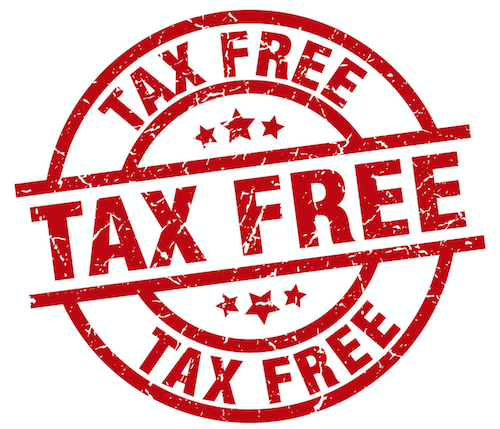
The words 'Tax Free' is music to any shopper's ears. Many brands and retailers, in tourist hot spots, were looking towards 2021 with optimism. With the UK finally severing ties with the European Union, there was an expected boon for duty free shopping. High spending visitors from the EU would join the rest of the world in being able to claim back VAT from many goods purchased. While they still will be able to, HM Treasury has announced changes to Tax Free Shopping, and they are proving to be deeply unpopular within the retail industry.
So, what’s changing? From January 2021, VAT refunds for overseas visitors in British shops will be removed. Overseas visitors will still be able to buy items VAT-free in store and have them sent direct to their overseas addresses, while the costly system of claiming VAT refunds on items they take home in their luggage will be ended. HM Treasury is also ending tax-free sales in airports of goods such as electronics and clothing for passengers travelling to non-EU countries, following concerns that the tax concession is not always passed on to consumers in the airport. In some instances these tax-free goods are brought back into the country by UK residents, putting high street retailers at a disadvantage.
HM Treasury is clearly expecting duty free shopping to be busier and is therefore no longer willing to incur the expense of running a scheme that ultimately costs them even more money. Tourists with a permanent residence in a non-EU country have been able to claim their VAT back on goods over £30 on production of their receipts. Many department stores and airports installed lounges where shoppers could claim back the value added tax on production of proof of identity and a completed tax form.
Currently, you can get a VAT 407 form from the retailer when buying your purchase They might ask for proof that you’re eligible, for example your passport. You show the goods, the completed form and your receipts to customs at the point when you leave the UK or EU. Customs will approve your form if everything is in order. You then take the approved form to get paid.
Companies, such as Global Blue or ChangeGroup, partner with stores worldwide, and offer a service for tourists to claim back the tax. The refund paid is the VAT minus the company's 'service fee'. Many people have complained about these high fees and hidden costs like service fees, currency conversion fees, payment fees etc.
According to Visit Britain, international tourists spent £6bn on shopping in the UK in 2018. Of those transactions, £3.5bn were registered as tax free sales, although VAT was only reclaimed on £2.5bn. From January 2021, visitors will be able to buy the same goods, but will no longer be able to take them away with them there and then if they want to claim back the VAT. They will have to be sent or couriered by the retailer to their home address, wherever they live in the world. Retailers are worried that this new system will put many tourists off buying. Being able to take your purchase away instantly is one of the joys of shopping. It also means that many will be liable for import duties or taxes in their home countries rather than smuggle it through in their luggage. Some countries have very high import taxes negating the VAT saving. For example, in China, the ‘Table of Tax Rates on Personal Luggage of Passengers and Personal Postal Parcels Arriving in China” is 50% for watches and timepieces valued over 10,000 yuan (About £1150). Under 10,000 the rate is 30%.
Walpole, an organisation representing 270 of the UK's finest brands, has sent a letter to the UK Chancellor this month and has joined forces with New West End Company along with the British Retail Consortium (BRC) and the Association of International Retail (AIR), to express their deep concern and shock over the decision.
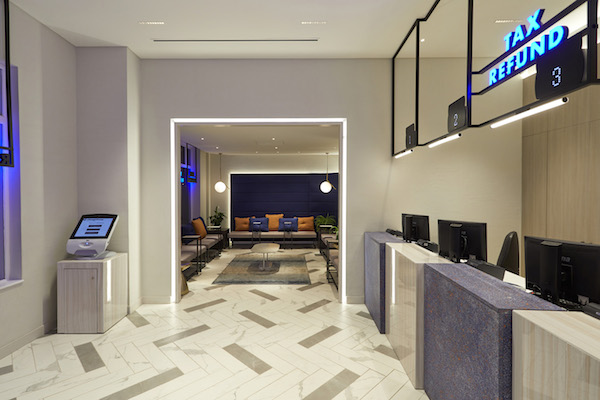
It said “it is extremely concerned by the decision’s inevitable impact, not only in London and other key UK shopping destinations for affluent international visitors, but also on the sector’s nationwide manufacturing hubs, where otherwise sustainable skilled employment will be affected by a further contraction in sales.
Right - ChangeGroup at Bicester Village
“The Covid-19 crisis has already dramatically reduced numbers of international visitors to Britain, and other European cities, and the removal of tax-free shopping for anyone visiting the UK will leave Britain at a profound competitive disadvantage post-Brexit.”
Walpole CEO, Helen Brocklebank, said “International visitors are fundamental to the UK luxury sector’s recovery. Right now, the Government needs to be doing all it can to underline the allure of UK PLC and accelerating efforts to encourage affluent visitors to return to our shores rather than actively discouraging them with rulings like this. Globally famous brands like Burberry, Johnstons of Elgin, Harrods, Glenfiddich whisky and Hendrick’s Gin created a ‘jewel in the crown’ sector that was growing at nearly 10% each year before the pandemic, worth £48 billion to the UK economy. £4.5 billion in sales was generated by international visitors alone. Paris ranks as number one destination for luxury shoppers, closely followed by London. We will have no chance of retaining that position or becoming number one unless this decision is reversed.”
The important thing to note is that the government has not removed tax-free shopping, it is just making it harder for people to avoid import duties and avoid tax in their own jurisdiction.
The UK has already lost vast amounts of tourist spending and anything that looks like it could diminish it further is being met with shock and negativity. The UK will become the only European country not to offer VAT-free shopping for international visitors, but it is hard to argue a case without admitting that many tourists take part in tax avoidance. HM Treasury is expecting a higher number of tax claims when EU tourists join those outside of the EU in being able to claim and doesn’t want to shoulder the increased costs of administering this scheme.
In the new scheme, the VAT will be taken off by the retailer at the till. This new scheme requires added logistics, which adds extra costs for the retailer or seller.
One of the big questions will be, who will pay for carriage to the purchaser’s destination? Plus, installing a trusted form of delivery, in what could be very expensive goods, and making sure they arrive where and when they are supposed to arrive and making the consumer comfortable with that. It will surely have added insurance costs.
As for the change in ending tax-free sales in airports of goods such as electronics and clothing for passengers travelling to non-EU countries, the once bright spot of retail, pre-COVID, the airport, will no longer be as attractive to fashion retailers who can’t promote these duty-free savings. Airports have, over recent years, become shopping centres with runways and this will surely dent sales.
The retail industry could offer to pay the costs of running the tax refund system. It could add a surcharge to each purchase where the VAT is reclaimed. Unfortunately, due to the drop in tourists numbers, it will be harder to compare the effects of this new scheme with the old and whether this is reducing spending overall. When tourists are explained the new scheme, will they decide to buy elsewhere? Pay for the goods and have them shipped to get the VAT back? Or, simply swallow the full retail price?
Buy TheChicGeek's new book FashionWankers - HERE
ChicGeek Comment Fashion Weeks: September's Issues
 September is fashion’s month. Once bulging fashion magazine issues - remember those?! - the start of fashion’s most important selling season, and, of course, fashion weeks makes September the most important month of the year for the, estimated, global $1.5 trillion fashion industry.
September is fashion’s month. Once bulging fashion magazine issues - remember those?! - the start of fashion’s most important selling season, and, of course, fashion weeks makes September the most important month of the year for the, estimated, global $1.5 trillion fashion industry.
Above - Louis Vuitton's COVID LV Shield hitting stores in October
Fashion week is the canary in the mine and the biggest to suffer from the pandemic. Events which combine travel and vast numbers of people aren’t going to work right now, and, therefore, puts the traditional idea of fashion weeks into a strange predicament. While many fashion councils are trying to push ‘business as usual’, it is far from it.
New York has started, but few would have realised. Designers sitting out New York Fashion Week, this season, include Marc Jacobs - its biggest draw - plus Ralph Lauren, The Row, Pyer Moss, Michael Kors, Telfar, Oscar de la Renta and Brandon Maxwell. Those still taking part can have a socially distanced crowd of just 30 people, while, before, traditional shows ranged into the multiple of 100s. London's fashion week runs from 17th September - Tuesday 22nd September 2020 with the same strict controls.
Fashion weeks is the fashion business in an event and drives focus and attention from outside its bubble to retail and the idea of purchasing something ‘new’ to consumers. They are also extremely old fashioned and had less and less relevance way before COVID 19.
While the majority of fashion shows are pointless, a few images, brands, designers will emerge that stick and steer the fashion industry into that direction for the next six months. It’s also a coming together of people and a temperature test of the industry. But, they have become bloated and drawn out exercises in wasting time and money when fashion can no longer afford either. Limos driving groups of pampered people all over town for 10 mins feels dated and indulgent.
The major of women’s fashion weeks - New York, London, Milan & Paris - managed to scrape through COVID in February and March at the beginning of the year. This will be the first test of how major fashion weeks will run with a global pandemic hanging over it. Some brands, like Louis Vuitton and YSL, have done separate shows over the past few months, but nothing like previous years.

Left - LFW's Digital Schedule home page
This season, the London Fashion Week the schedule has been split into three sections and includes brands showing digitally, physically or both - ‘phygital’. The gender neutral showcase will run from Thursday 17th to Tuesday 22nd September 2020 and include both digital activations on www.londonfashionweek.co.uk and physical events, adhering to government guidelines on social distancing. The schedule will host over 80 designers including 40 womenswear, 15 menswear, 20 menswear & womenswear and 5 accessories brands. There will be a total of 50 digital only activations, 21 physical and digital, 7 physical only and 3 designers who will activate through a physical evening event only.
The LFW digital platform, launched in June for the men’s calendar, will continue to serve as the Official Digital Hub and will be freely accessible to everyone, industry professionals and global fashion consumers alike. The British Fashion Council says. “LFW is one of the few international events to still be going ahead in London, proving the industry’s resilience, creativity, and innovation in difficult times. Now more than ever, the BFC acknowledges the necessity to look at the future of LFW and the opportunity to drive change, collaborate and innovate in ways that will establish long-term benefits, develop new sustainable business models and boost the industry’s economic and social power. The British Fashion Industry faces enormous challenges due to the impact of COVID-19 and the BFC keeps on calling on Government to support a sector which in 2019 contributed £35 billion to the UK economy and employs over 890,000 people (Oxford Economics, 2020).”
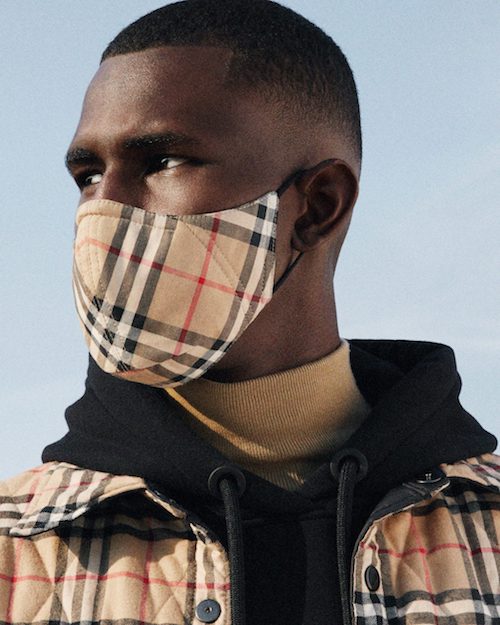
Having a traditional ‘schedule’ for barely 28 shows seems old fashioned. As fashion blogger @bryanboy tweeted to his 502.4K Twitter followers regarding NYFW, this week, “It’s really annoying how designers still get an individual time slot for what essentially is a release for a pre-taped short film. No one cares!! Just do a date and release it on the morning or afternoon of that day and it doesn’t matter if it overlaps with other designers”.
Right - Burberry Horseferry check face mask coming soon
It’s the equivalent of waiting in all day for an e-mail. Nobody has time for this, especially when it feels like most of this stuff won’t be ordered or bought anyway. Maybe just have a single release date, hub for content and publicise that?
The most anticipated London show is Burberry’s. Rumoured to be Riccardo Tisci’s last, it will be held outdoors. Burberry will use Twitch’s ‘Squad Stream' function, which allows users to view multiple perspectives of the show at a time and chat with fellow viewers using the service’s chat window. It will be live-streamed without an audience.
LFW designer Emilio De La Morena is presenting an exhibition rather than a traditional catwalk show. Called ‘Troubles SS’21’, it is an assimilation of fashion, film, and sculpture into a “consolidation of the designers professional and personal journey in conjunction to the global pandemic”.
Fashion’s optimistic hope has been that this pandemic will blow over and we’ll get back to the normal fashion week circus asap. Fashion weeks work in the future and were hoping that by the time the 2021 collections come out this will all feel like a bad dream, but, it’s also realistic to think otherwise. Fashion is fickle, when the pandemic is over any product will instantly feel dated and obsolete. It is difficult to know how much time and money to invest in it.
Adar Poonawalla, CEO of the world’s largest vaccine manufacturer, saying that not enough COVID-19 vaccines will be available to inoculate the global population until at least the end of 2024. According to Poonawalla, pharmaceutical companies are not increasing production capacity quickly enough to vaccinate everyone faster. “It’s going to take four to five years until everyone gets the vaccine on this planet,” Adar Poonawalla, chief executive of the Serum Institute of India, said.
Some brands are incorporating PPE protection into their collections. Louis Vuitton has designed a coronavirus face shield which can also be flipped up and used as a sun visor. The LV Shield will be available to purchase from 30th October 2020 in selected Louis Vuitton stores worldwide for around £700. Burberry face masks are coming soon on the brand’s website, strange they haven't released these faster, and are donating 20% from the selling price of each face mask to the Burberry Foundation COVID-19 Community Fund operated by The Burberry Foundation to support communities impacted by the pandemic globally.
Fashion weeks as an idea is still important, it just needs to reinvent itself for life post-pandemic. Mega brands can still blow millions on a pointless extravaganza, but for smaller designers and brands it can be their slim opportunity to be scouted and brought to attention. It also reaffirms the importance of seeing, feeling and experiencing fashion, but with many influencers shunning fashion week and with the amount of traditional magazine press dwindling, who is it for exactly?
We do need to see. Digital is all a bit unreal. We may as well be dressing avatars. You also have a better memory of items in real, it’s the equivalent of a school trip, they’re fully rounded and you can picture yourself wearing it. But, is it that worth £100,000s to brands? Fashion week is a preview and is also important for brands to know what to make and order. We’ve tried ‘See now, buy now’ and now’s the time for digital presentations. Is the future for fashion weeks somewhere in-between? Or does that just take us back to square one?!
Buy TheChicGeek's new book FashionWankers - HERE
ChicGeek Comment Knowingly Fixing John Lewis
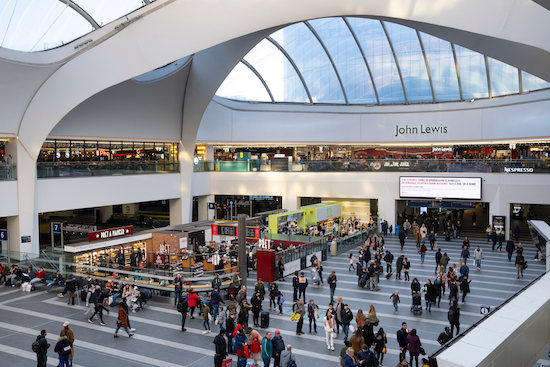
The department store sector is at a crossroads. It’s do or die time, and a race to right these historical businesses before the whole thing capsizes.
Left - The John Lewis in Birmingham is closing after only 5 years
John Lewis was always seen as a steady ship amongst the losers, like Debenhams and House of Fraser, made unseaworthy with oodles of private equity debt.
But, even John Lewis, the famous cooperative, is suffering in this retail storm. Is it time to batten down the hatches and lose its price matching promise? What can the John Lewis Partnership do to sail through?
John Lewis’ ‘Never Knowingly Undersold’ promise is a left over from a bygone time, much like its ‘Clearance’. Group chair, Sharon White, told the Sunday Times, last Sunday, she expected the price pledge to go. The famous promise to match rivals' prices has become harder to defend as competition from online retailers has become ever tougher and eaten into margins. The slogan is nearly 100 years old having been in place since 1925. "The proposition is important because it signifies being fair to society. We're reviewing it to improve it,” she said.
Pre-COVID, the John Lewis Partnership - John Lewis and its supermarket Waitrose - full year trading update for the 52 weeks ending January 25th showed operating profits dropped by 23 per cent year-on-year to £123 million, while pre-tax profit suffered a 25 per cent year-on-year decline to £146 million. Meanwhile, revenues declined 1.6 per cent year-on-year to £10.15 billion.
While core operating profit at Waitrose grew by £10 million to £213 million, it slumped by £75 million to £40 million reflecting weak sales in home and electricals, investment in technology and higher staff costs.

The staff bonus - the profits split between its employees - was two per cent. The lowest amount since 1953 when staff received nothing.
Right - John Lewis' shiny Birmingham store was opened to great fanfare in 2015
Profits were falling at John Lewis’ department stores before COVID 19, and while sales at Waitrose would have increased, it is doubtful it would have made up the difference. So, what’s gone wrong at John Lewis?
Over Expansion - Many people might think John Lewis’ huge retail estate was a legacy leftover from a previous era, but it is worth noting nearly half, 24 of their 50 John Lewis shops, were opened after 2000. They weren’t a traditional legacy retailer and haven’t been afraid to close stores over the years. The Knight & Lee department store in Southsea closed in 2019 after more than 150 years, and was the first to be closed since 2006. John Lewis has announced the closure of a further eight stores including its shiny flagship in Birmingham, above New Street Station, opened only five years ago. This year between 60% and 70% of John Lewis's sales are expected to be online, compared to 40% last year, making a large number of stores harder to justify.
Waitrose has been lightly trimming its 338 store estate announcing the closure of 17 stores since June 2018 and a further three Waitrose stores are to go, at Helensburgh in Scotland, Four Oaks in the West Midlands, and Waterlooville near Portsmouth, later this year.
The company has said they were exploring whether excess shop estate could be used for new mixed-use affordable housing. White said she is talking to developers and investors about partnering to build flats, many of them affordable, on top of existing shops, starting in west London.
John Lewis has announced selling more Waitrose food in their department stores which would make good use of excess space and fill the in-town convenience many other food retailers offer as long as the opening hours are extended.
Lack of Convenience - As people shunned town centres and shopped local, Waitrose & Partners lack of convenience stores has become more prominent. Out of its 338 shops, across the UK, just 65 are "little Waitrose" convenience shops. In comparison, Tesco operates 153 Metro stores and more than 1,700 Express outlets. Sainsbury's Convenience Stores Limited (trading as Sainsbury's Local) is a chain of 770 convenience shops operated by the UK's second largest supermarket chain Sainsbury’s.
Waitrose has a 5.1% share of the food market, making it the eighth-largest retailer of groceries in the UK. These convenience stores can charge more for their restricted selection of products and would make Waitrose, perceived as more expensive by many, more competitive on pricing.
White told John Lewis staff, "We are looking at how we make our products available through other routes, reflecting the fact that Waitrose has a smaller presence in the convenience market than other supermarkets.”
Waitrose needs to extend its opening hours. Many close at 9pm which feels early in today’s competitive supermarket landscape.
Too Much Focus On Fashion - White told the Sunday Times the chain needed "more inspiration, surprise, fun" and that it would compete by "curating" items in store better. John Lewis would focus less on women's fashion and get rid of travel and spa services. Instead it would offer more financial, home and garden products.
John Lewis made a big push into the fickle and highly competitive world of fashion a few years ago, and, while it was the correct place for expansion at the time, it has taken focus away from its core home and electricals. During lockdown people have re-evaluated their homes and want to spend the money they would have spent on holidays and fashion on their surroundings.
It is worth noting that online electrical retailer AO saw annual revenues of £1.05 billion to March 2020, up 15.9% on a year earlier. AO’s customer base grew last year to nearly 6.5 million customers in the UK. This, along with many other online retailers, must have eaten into John Lewis’ traditional hold on the white goods market.
Waitrose/Ocado Loyalty Battle - September sees Waitrose’ 20 years relationship with online delivery service Ocado come to an end. The tie-up generated 6% of Waitrose’s sales. They are being replaced by Marks & Spencer.
Ocado has already said it has no spare capacity for new customers and it will be interesting how many stay loyal to either brand.
Waitrose has two online distribution centres - Coulsdon and Edmonton in London - to service their online orders and has an opportunity to poach customers from Ocado.
Ocado says it will stock 6,000 M&S products, compared with the 4,000 it sells as part of its supply deal with Waitrose. The alternatives would be the “same price or lower, and of the same quality or better” than the Waitrose ones, Ocado said.
Can Waitrose compete with the robotic efficiency of Ocado? Waitrose had enlisted Today Development Partners, a technology business run by Ocado co-founder Jonathan Faiman, to help grow its online operation without Ocado. However, the deal ended after just four months and it subsequently emerged Faiman, who left the online business in 2009, was being sued by Ocado.
Online orders are always restricted by the number of vans, drivers and delivery slots. A Waitrose tie-up with Amazon Fresh has been rumoured to help with these online growth ambitions. It is predicted sales online with John Lewis to become a 60 per cent and Waitrose to rise to over 20 per cent.
Waitrose has too many disparate websites selling flowers and gardening products, and should push these all into one site and delivery option. It should also link John Lewis and Waitrose more.
Too Expensive? - Walk into a John Lewis or Waitrose and it feels like everybody shopping there has white hair. While the Boomers are an affluent demographic, the brands are perceived as being too expensive and aren’t engaging with younger or those who are more price conscious. It is particularly noticeable at Christmas with small gifts coming in much more expensive than competitors or what consumers are willing to pay. It needs to broaden its pricing with more prices at the lower end. It also needs to offer more exclusive products and give people a reason to pay more. It needs to think of places like TK Maxx as competitors.
Can Rental Replace Sales? - The company said it was considering creating a way for rental of its products and re-sale of used items. While everybody is going rental crazy, can John Lewis renting white goods and sofas make up sales or will it just cannibalise existing sales and be an expensive distraction?
Announced in August 2020, the items will be rented via a third-party site, Fat Llama, with the service available initially just in London but set to roll out nationally if successful. People can choose between 50 different items from the retailer’s range. Prices start at £17 a month for a desk or chair rented for 12 months, and rise for larger goods on shorter contracts.
John Lewis has said "fair value" would still be central to its ethos but "in a more modernised form” and it hopes to have a new slogan to replace “Never Knowingly Undersold” in place by October.
In January 2020, John Lewis stopped publishing its weekly sales figures, it was seen as a bellwether for the whole retail sector.
Department stores are suffering the most at the moment. Many of these issues were pre-COVID 19, but, like all retailers, it would have speeded up the need for change. John Lewis is a special example of a retailer which, luckily, hasn’t been saddled with a debt mountain. They have the opportunity to be the last national department store standing in the UK and could reap the benefits of high-street competitors disappearing, but that doesn’t change the challenges from online.
It sounds like John Lewis is moving in the right direction and making the right noises, but this cautious retailer needs to make some hard decisions. John Lewis is a retailer people would miss, they need to remind people of that. It just needs focussed adjustment rather than radical amputation.
ChicGeek Comment The Future of FOMO
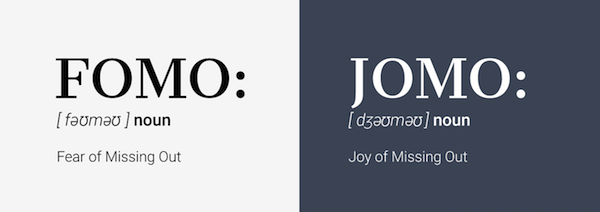 Has the fear truly gone when there is nothing to miss out on? The anxiety inducing reason to exist for FOMO, or the fear of missing out, disappeared thanks to COVID 19. Poof!
Has the fear truly gone when there is nothing to miss out on? The anxiety inducing reason to exist for FOMO, or the fear of missing out, disappeared thanks to COVID 19. Poof!
In lockdown, nobody was doing anything, going anyway or seeing anything that you need worry yourself about missing out on. What a relief! *exhales* It was a great leveller.
Fashion has been one of the main pushers of FOMO. Hinged on social media, the fulcrum was this idea that everybody was having a better time than you and you needed all this stuff to go with it. The positive side of it suited marketers.
FOMO was the reason you often left the house, the reason you justified needing something that you really didn’t and then pushing the continued momentum on of FOMOing others through your social media channels. LOOK AT ME...
COVID 19 has been one giant reset button, and while people will document their lives, which inevitably will induce some type of FOMO, it won’t have the intensity or the choreography as before. The obsessions with far flung places and life filters was waning anyway. Influencers all looked the same and seemed to do the same things. “I shop therefore I am” became very different when all you were allowed to buy was food and medicine.
I don’t buy into this idea that the world will be radically different. The world is elastic and will spring back into some shape that was recognisable from before. What has changed drastically is the economy. This will be the catalyst. A great recession that will take years to get over and, when out the other side, things will look different. It will be crass to be too show-offish, too material, too extravagant, too pricey - will we see designer logos minimised? - in lean times. It will bookend the 21st century’s teen decade and be a full stop to the look-what-I’ve-got culture which dominated much of the past decade.
It’s the art equivalent of installing escalators into museums and turning them into shopping centres. It was such a visual decade with nothing to be repeated. Disposable. The luxury brands will morph, like they always do, and ones who can repackage this new environment will profit, again, like always. This isn’t wishful thinking, like less pollution and people thinking greener about what they buy, it is a reaction to an action, which, when many people will be unemployed or struggling to make ends meet, FOMO is the last thing they'll need in their lives. This digital window will look dated and tease-like to many. It will be a turnoff.
FOMO is often seen as a fun positive, like seeing what your friends are doing etc., humans are naturally nosy, and used in advertising as a trendy term, but it’s a fine line and this anxiety, "a desire to stay continually connected with what others are doing”, - defined by Wikipedia - can spiral into pressure and a feeling of inadequacy. It was fast and people’s lives have slowed. Money was often the cause of things speeding up. People have appreciated more time and witnessed the little things in nature during these past few months like they’ve never had time to do in recent memory.
Life was a reason to generate ‘content’ before and this content overload just kept getting more demanding. Images can go back to being memories and records rather than a competitive hustle. We had JOMO, joy of missing out, before, as a reaction to FOMO, but I think we’ll be happy sitting somewhere between the two.